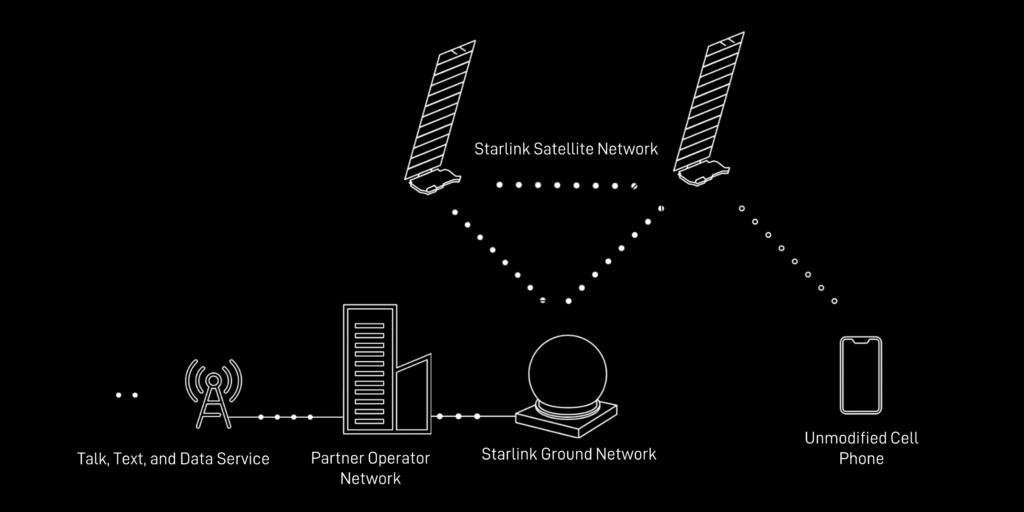Graphic of Starlink’s direct to cell function. Photo: SpaceX
SpaceX sent the first text messages via the recently launched direct-to-cell Starlink satellites, on Monday, the company announced Jan. 10.
SpaceX announced on Jan. 10 that less than six days after launching the satellites, engineers sent and received our text messages to and from unmodified cell phones on the ground to the satellites, using T-Mobile spectrum.
The satellites function like cell towers in space, and will allow any 4G LTE device to “roam” onto the Starlink network, using partner spectrum to operate over a certain country. Starlink is working with KDDI in Japan; Optus in Australia; One NZ in New Zealand; and Rogers in Canada, with an open invitation for more providers.
SpaceX said in Wednesday’s announcement that it plans to scale the number of direct-to-cell satellites in orbit “in mere months.” SpaceX plans to start text service this year, and voice, data, and IoT service in 2025.
SpaceX also shared more about the technology behind the development, including that SpaceX developed custom silicon onboard the satellite that is optimized for this application. SpaceX also developed 2.7 meter by 2.3 meter advanced phased arrays that use extremely sensitive radio receivers and high-powered transmitters for communicating with cell phones from space.
These antennas are built for the Starlink “V2mini” satellites that are launched by the Falcon 9 rocket, and SpaceX also plans to deploy direct-to-cell satellites on Starship once it is operational.
Get the latest Via Satellite news!
SpaceX Sends its Text Messages Via Direct-to-Cell Starlink Satellites – Via Satellite

